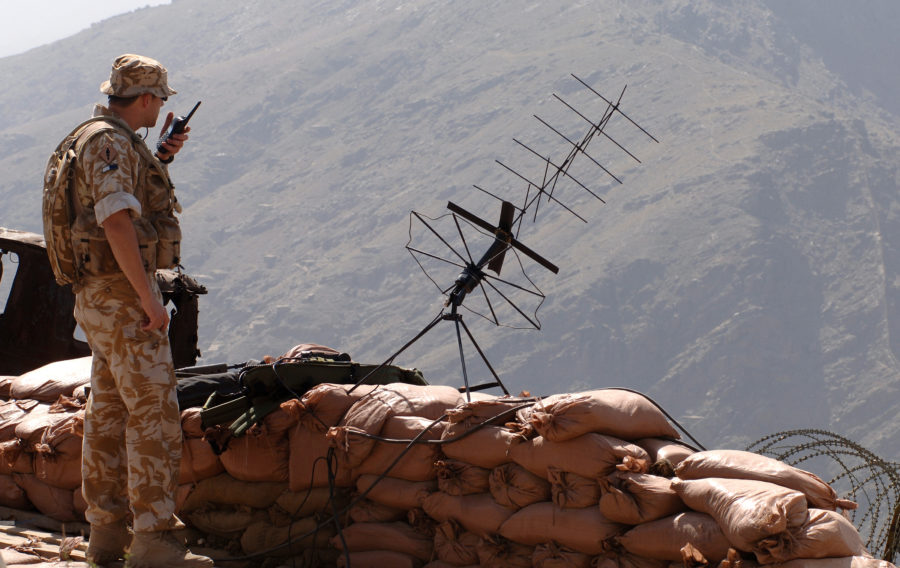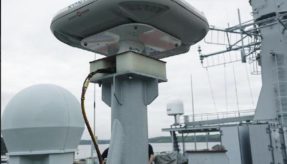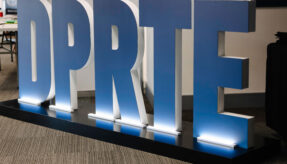
Having a clear picture of what is happening around you is vital on the battlefield. Command, Control, Communications, Computers, Intelligence, Surveillance and Reconnaissance (C4ISR) provide the tools to inform decision-making and maintain advantage in the warfighting domain.
Whilst a broad term, C4ISR’s multiple fields could represent a field in their own right and but its fundamental role is to create a complete digital awareness through accurate and relevant real time information.
The information can be processed, analysed, exploited and delivered to create a strategic and tactical advantage.
The C4ISR envelops a wide range of capabilities. Northrop Grumman has developed a 360-degree, spherical situational awareness system in the electro-optical distributed aperture system (DAS). The F-35 DAS surrounds the aircraft with a protective sphere of situational awareness. It warns the pilot of incoming aircraft and missile threats as well as providing day/night vision, fire control capability and precision tracking of wingmen/friendly aircraft for tactical maneuvering.
Other technical innovation include wearable monitoring systems that continuously checks core body temperature, heart rate, maximal oxygen uptake and motion (including fall detection) and sends the data in real-time to a cloud-based analytics platform.
This type of monitoring equipment not only provides improved situational awareness and enhanced performance but also has the potential to improve medical care should for troops. It is envisaged that medical teams would be able to digitally receive information from non-intrusive biosensors within the clothing on the injury and condition of the injured party. This would enable the injury to be treated sooner, potentially saving lives.
The increased use of technology on the battlefield has led to the development of ruggedised equipment. With military operations often contested in extreme environments, devices such as handhelds and laptops require greater protection without any loss of functionality.
Asset tracking is another function of CS4ISR. This provides positional and status updates of operational assets in the battlefield and obviously benefits joint exercise operations.
The continued march of technological advancement creates both threats and opportunities for defence. Indeed, C4ISR itself is evolving into C5ISR to incorporate the function of cyber protection.
C5SIR is capable of delivering cyber protected situational awareness in addition to providing a full spectrum of data that can assist defence forces.
Growing instability and threats at home and globally mean that C4SIR, especially the fields of surveillance and reconnaissance, is being pushed to develop its capabilities even further.
Multifunction RF (MFRF) systems, which include the likes of radar, electronic support and datalink communications utilise a shared set of electronically scanned array (AESA) technology, are being developed. These will result in dramatic improvements such as size, weight and power (SWaP), a reduction in life cycle cost, reduced interference and enhanced optimisation of RF functions.
MFRF also ensures that as more technology is deployed in the battlespace and, as such, the risk of interference from various devices increases that electromagnetic compatibility (EMC) is optimised to reduce these potential disturbances.
EMC limits electromagnetic emissions from equipment in order to ensure that, when used as intended, such equipment does not disturb radio and telecommunication, as well as other equipment. It also means that equipment should be immune to such interference and tries to ensure that this equipment is not disturbed by radio emissions, when used as intended.
Significant improvements in power density and thermal conductivity are anticipated by a move towards gallium nitrate, a non-silica-based semi conductor that is used in the field of power electronics such as radar and satellite communications.
Short wave infrared (SWIR) technology is commonly used in such defence applications as laser guiding systems, camouflage detection, surveillance, night vision, boarder monitoring due its ability to provide higher contrast images in adverse weather conditions and lighting.
The anticipated fall in cost of manufacturing these systems means that they re set to be used in a wider set of applications such as in vehicle mounting.
Another function undergoing innovation and development are Electro-Optics and Infrared (EO/IR) sensors. These deliver a key military capability for surveillance, reconnaissance, target acquisition, threat warning, and target detection and are able to produce is high image resolution, critical for the accurate identification of objects of interest.
Additionally, EOIR sensors provide a complementary approach to radio frequency sensors, being able to detect objects in environments where radar is challenged or to operate against objects that have a naturally lower radar signature.
The Ministry of Defence is seeking to develop a number of EOIR technologies to address the future need for highly capable and affordable sensors.
The Defence and Security Accelerator (DASA) has launched a competition, on behalf of the Defence Science and Technology Laboratory (Dstl) looking for Electro-Optics and Infrared proposals with an expected £2.5m of funding available over two phases.
DASA are looking to fund two distinct types of work. The first is short-term investigations into existing concepts lasting no more than nine months and will see funding for up to 10 of these in Phase 1 of the competition.
The second will be longer term ‘deep-dive’ investigations into novel materials or disruptive concepts with a maximum duration of two years. It is anticipated that up to fund up to three of these would receive funding in Phase 1.
The competition will focus on three key challenge areas with all sensors and technologies to operate from the Ultra Violet (UV) to the Far Infrared (IR) range.
The first challenge area will centre on Novel Optics and Materials, the second on Novel Sensors, while the third will focus on Embedded/Edge Processing applied to EOIR sensing.
DASA envisage the proposals could enable capabilities like imaging in difficult environments such as through cloud or smoke, atmospheric turbulence, extreme low/no light, through foliage or camouflage.
Potential benefits also include detecting and identifying difficult to distinguish objects passively and actively in low light/no light/different wavebands (UV – LWIR) at long range.
Other possibilities are being able to identify objects at extreme long range (over 20km). This would make classification of an object much quicker, leading to swifter informed decision-making.
Further innovation may also be able to improve real time assistance for situational awareness. This could be deployed when needing to identify with an object in densely crowded scene such as an urban environment or crowded sea lanes in the littoral environment.
image © Crown Copyright
If you would like to join our community and read more articles like this then please click here.
C4ISR Command communications Computers Control intelligence reconnaissance surveillance







